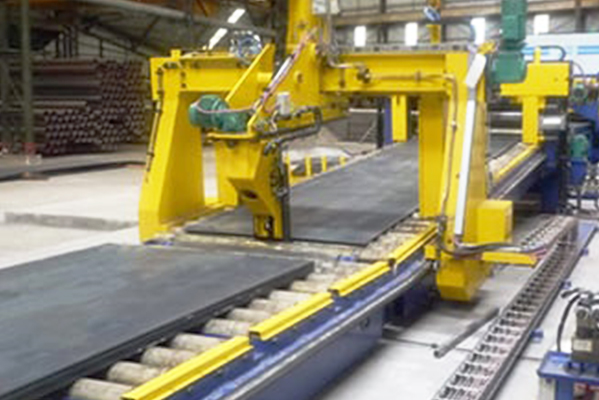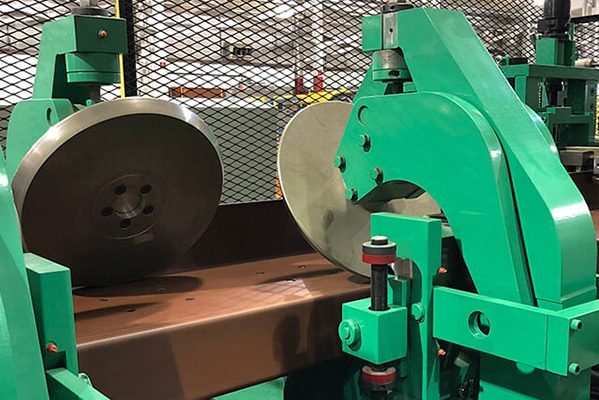Navigation Menu
Contact Us
- Email:
- info@wxavatar.com
- Address:
- Yurong Village, Yuqi Street, Huishan District, Wuxi, China.
Release Date:Apr 23, 2025 Visit:39 Source:Roll Forming Machine Factory
A decoiler is an essential piece of equipment used in metalworking and manufacturing industries to unwind coiled materials, such as steel, aluminum, or other metal strips, for further processing. The decoiling process ensures a smooth and controlled feed of material into subsequent machinery, such as levelers, slitters, or stamping presses. Below is a detailed explanation of the decoiler's working process.

1. Loading the Coil
The first step involves placing the coiled material onto the decoiler. This can be done manually with the assistance of a crane or forklift, or automatically using coil-loading systems. The coil is positioned onto the decoiler’s mandrel or spindle, which expands to secure the coil firmly in place. Proper alignment is crucial to prevent material deviation during unwinding.
2. Securing and Centering the Coil
Once the coil is loaded, the decoiler’s arms or supports adjust to hold the coil in place. Some decoilers feature hydraulic or pneumatic systems to ensure even pressure distribution, preventing slippage during operation. Centering mechanisms may also be employed to align the coil with the downstream equipment, ensuring smooth material flow.
3. Unwinding the Material
The decoiler begins unwinding the coiled material at a controlled speed. Depending on the design, the decoiler may use a motorized drive system or rely on the pull of downstream machinery to unwind the material. Tension control systems are often integrated to maintain consistent tension, preventing material sagging or excessive stretching.
4. Straightening and Guiding (Optional)
In some setups, decoilers are paired with straighteners or guide systems to correct any curvature or misalignment in the unwound material. Rollers or leveling devices may be incorporated to ensure the material feeds smoothly into the next processing stage.
5. Feeding into Downstream Equipment
The unwound material is then fed into subsequent machinery, such as a slitter (for cutting into narrower strips), a press (for stamping or forming), or a roll forming line. Sensors and automation systems may regulate the decoiler’s speed to synchronize with downstream operations, ensuring continuous production flow.
6. Coil End Detection and Stopping
When the coil nears its end, sensors or manual checks detect the remaining material. The decoiler slows down or stops to prevent damage to equipment or material wastage. Some advanced decoilers feature automatic threading systems to prepare for the next coil without manual intervention.
7. Unloading the Decoiler
After the coil is fully unwound, the decoiler’s mandrel retracts, allowing the empty core to be removed. The process then repeats with a new coil, maintaining efficient production cycles.

Conclusion
The decoiler plays a fundamental role in metal processing by ensuring a steady and controlled supply of material to downstream machinery. Its operation involves precise loading, unwinding, tension control, and synchronization with other equipment to optimize manufacturing efficiency. Proper maintenance and adjustment of the decoiler contribute to consistent material handling and reduced downtime in industrial applications.